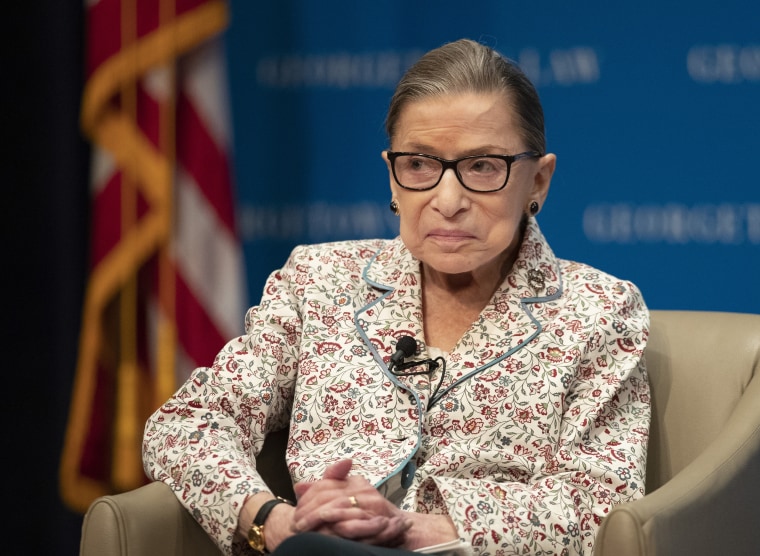Supreme Court Associate Justice Ruth Bader Ginsburg recently underwent a fresh round of treatment for a cancerous tumor on her pancreas, the high court said in a statement Friday.
The three-week radiation treatment, performed at the Memorial Sloan Kettering Cancer Center in New York City, was administered after doctors discovered a "localized malignant tumor" on her pancreas on July 31, the statement said.
The treatment — called stereotactic ablative radiation therapy — was administered in an outpatient setting for a three-week period that began Aug. 5. Doctors also inserted a bile duct stent as part of the treatment, which Ginsburg completed Friday, the court said.
In the statement, the court said that Ginsburg "tolerated treatment well" and that "no further treatment is needed at this time."
"The tumor was treated definitively and there is no evidence of disease elsewhere in the body," the court said. "Justice Ginsburg will continue to have periodic blood tests and scans."
Download the NBC News app for breaking news and politics
The tumor is the 86-year-old justice’s latest cancer scare. She has suffered a number of health setbacks in recent months, including a fall that fractured three ribs in November followed by surgery to remove two cancerous growths from her lung at the end of December. She missed oral arguments for a case in January, the first time she had missed courtroom arguments in 25 years.
Ginsburg had been diagnosed with colon cancer in 1999 and pancreatic cancer in 2009.
Pancreatic cancer is usually diagnosed at later stages of the disease, because its earliest symptoms can be quite vague, including loss of appetite, depression, jaundice, fatigue and abdominal pain.
The vast majority of pancreatic cancer patients will die within five years of diagnosis, according to the American Cancer Society. Just 9 percent are expected to survive more than five years.
By all accounts, Ginsberg has tolerated this most recent radiation treatment well.
"A three-week course of radiation for pancreas cancer is moving into the standard of care," said Dr. Kenneth Merrell, a radiation oncologist at the Mayo Clinic in Rochester, Minnesota. Merrell has not treated Justice Ginsberg.
"We are finding that this is a very tolerable course of treatment with little impact on the patient's quality of life," Merrell told NBC News.
Affectionately known as "RBG," Ginsburg is the court's oldest serving justice and was nominated in 1993 by then-President Bill Clinton.
If the liberal Ginsburg were to step down from the bench, that would enable President Donald Trump to name her replacement. The nine-person court is currently made up of five justices nominated by Republican presidents and four nominated by Democratic presidents. Trump has so far nominated, and seen confirmed, two of the justices, Neil Gorsuch and Brett Kavanaugh.
Senate Majority Leader Mitch McConnell, R-Ky., has said that if a Supreme Court vacancy were to emerge next year, he would act to fill it quickly — a stark divergence from his decision in 2016 to block the consideration of President Barack Obama’s Supreme Court nominee, Merrick Garland, after the death of Justice Antonin Scalia earlier that year.
Ginsburg, however, has vowed to stay on the court for several more years, if possible.
Last August, she told CNN that she had no intention of retiring in the near future.
"My senior colleague, Justice John Paul Stevens, stepped down when he was 90, so I think I have about at least five more years," she said.

